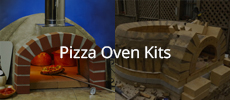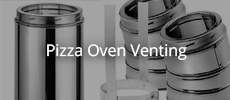Hi all!
It’s been just over 4 years since I built my smallish homebrew cast oven at 70cm – 28” internal oven floor diameter, see here:
https://community.fornobravo.com/for...losure-belgium
I’m really pleased with the oven, great for pizza’s (the original reason for the oven), various types of dishes and also good for overnight retained heat cooking because I’ve insulated it as much as I could.
I hate to let all this heat go to waste so I always prepare a few other dishes afterwards when the fire is out. sometimes a few sourdough breads first, always a stew or two, finishing with an overnight slow cook, which means more preparation and some more work later in the evening/night.
Okay, it’s not ‘work’ of course, it’s fun to do but I notice my desire to not let the retained heat go to waste really stands in my way to fire up the oven more often for just enjoying a few pizza’s and then nothing afterwards.
So I was thinking of maybe building a second oven only for pizza’s, this oven would have the same internal diameter, but would not need to have the same big layer of insulation on top, or thickness of fire bricks (the ones I have now are 8 or 10cm thick!).
With less insulation and thinner fire bricks / tiles the oven would reach temp faster, and I could try my hand at an igloo style oven (no enclosure but a waterproof render over the dome) which I find aesthetically more pleasing. I’d use less wood, would be baking pizza faster and the oven would cool down much faster so I wouldn’t feel bad about wasting heat.
I could even fabricate a mobile stand on wheels with the oven on top…
I would appreciate some input/thoughts about:
It’s been just over 4 years since I built my smallish homebrew cast oven at 70cm – 28” internal oven floor diameter, see here:
https://community.fornobravo.com/for...losure-belgium
I’m really pleased with the oven, great for pizza’s (the original reason for the oven), various types of dishes and also good for overnight retained heat cooking because I’ve insulated it as much as I could.
I hate to let all this heat go to waste so I always prepare a few other dishes afterwards when the fire is out. sometimes a few sourdough breads first, always a stew or two, finishing with an overnight slow cook, which means more preparation and some more work later in the evening/night.
Okay, it’s not ‘work’ of course, it’s fun to do but I notice my desire to not let the retained heat go to waste really stands in my way to fire up the oven more often for just enjoying a few pizza’s and then nothing afterwards.
So I was thinking of maybe building a second oven only for pizza’s, this oven would have the same internal diameter, but would not need to have the same big layer of insulation on top, or thickness of fire bricks (the ones I have now are 8 or 10cm thick!).
With less insulation and thinner fire bricks / tiles the oven would reach temp faster, and I could try my hand at an igloo style oven (no enclosure but a waterproof render over the dome) which I find aesthetically more pleasing. I’d use less wood, would be baking pizza faster and the oven would cool down much faster so I wouldn’t feel bad about wasting heat.
I could even fabricate a mobile stand on wheels with the oven on top…
I would appreciate some input/thoughts about:
- What thickness floor tiles would be advisable
- What thickness under floor insulation
- What thickness dome wall – previous oven had walls about 5 cm – 2” thick, I’m a bit scared going thinner, especially given the big cracks I have in the dome now.
- What thickness/type of insulation on top (2” fire blanket, or only 2” vermiculite/perlite/cement mixture?)
- Also: what would be the expected time until the oven reaches pizza temp?
- And what would be the weight of a trimmed down oven like this?





 I’d also have to learn how to weld if I decide to make a metal ‘trolly’.
I’d also have to learn how to weld if I decide to make a metal ‘trolly’.
Comment